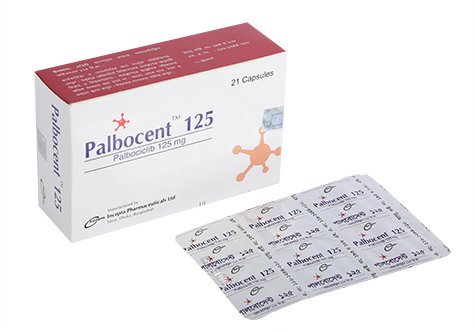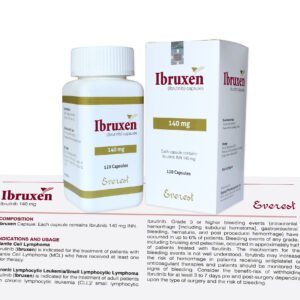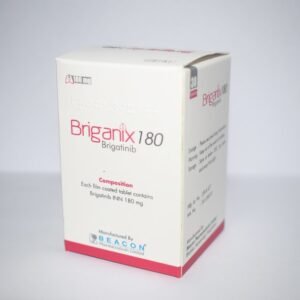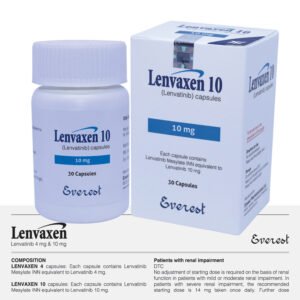Description
Ibrance (Palbociclib) 125mg: A Comprehensive Guide
Introduction:
Exploring the efficacy and dosage of Ibrance (Palbociclib) 125mg can shed light on its benefits and applications. This comprehensive guide delves into the nuances of this medication, providing insights into its dosage, administration, and potential side effects.
Understanding Ibrance (Palbociclib) 125mg
In this section, we’ll delve into the fundamental aspects of Ibrance (Palbociclib) , elucidating its mechanism of action and therapeutic benefits. Understanding how this medication works is crucial for optimizing its efficacy in clinical settings.
Dosage Guidelines for Ibrance (Palbociclib) 125mg
Here, we’ll outline the recommended dosage of Ibrance (Palbociclib) 125mg for various indications, ensuring safe and effective administration. Adhering to prescribed dosage guidelines is essential for maximizing therapeutic outcomes while minimizing adverse effects.
Initiating Therapy with Ibrance (Palbociclib) 125mg
This subheading will detail the initial dosage and titration schedule for initiating therapy with Ibrance (Palbociclib) , providing healthcare professionals with practical insights into treatment initiation.
Monitoring and Adjusting Dosage
In this subsection, we’ll explore the importance of regular monitoring and potential dosage adjustments based on patient response and tolerability. Maintaining optimal dosage levels is critical for achieving sustained therapeutic benefits.
Administration of Ibrance (Palbociclib) 125mg
Here, we’ll elucidate the optimal methods for administering Ibrance (Palbociclib) Palbocent, including dosage forms, administration routes, and considerations for patient compliance.
Tips for Administration
This subheading will offer practical tips and strategies for healthcare professionals and patients to enhance the administration process and ensure adherence to prescribed regimens.
Potential Side Effects of Ibrance (Palbociclib) 125mg
Exploring the potential side effects associated with Ibrance (Palbociclib) is crucial for mitigating risks and optimizing patient safety. This section will provide insights into common and rare adverse reactions, empowering healthcare professionals to proactively manage side effects.
Managing Side Effects
In this subsection, we’ll discuss proactive measures and pharmacological interventions for managing common side effects of Ibrance (Palbociclib) 125mg, enhancing patient comfort and treatment adherence.
Clinical Efficacy and Safety Profile
Examining the clinical efficacy and safety profile of Ibrance (Palbociclib) through evidence-based insights and clinical trials data can offer valuable perspectives on its therapeutic potential and risk-benefit profile. This subheading will highlight key efficacy data from clinical trials and real-world studies, showcasing the therapeutic benefits of Ibrance (Palbociclib) 125mg in various patient populations.
Safety Profile Assessment
Here, we’ll evaluate the safety profile of Ibrance (Palbociclib) 125mg, analyzing data on adverse events, drug interactions, and long-term safety outcomes to inform clinical decision-making.
Palbocent 125: Each capsule contains Palbociclib INN 125 mg.
Commercial Pack
Palbocent 125: Each box contains 21 capsules.
FAQs (Frequently Asked Questions)
- What is the recommended dosage of Ibrance (Palbociclib) for breast cancer treatment? The recommended dosage of Ibrance (Palbociclib) for breast cancer treatment typically involves a specific dosing regimen based on patient characteristics and treatment history. It’s essential to consult with a healthcare professional for personalized dosage recommendations.
- How should Ibrance (Palbociclib) be taken? Ibrance (Palbociclib) 125mg is usually administered orally, with or without food, as prescribed by a healthcare provider. It’s crucial to follow the recommended dosing schedule and administration instructions provided by your healthcare team.
- What are the common side effects of Ibrance (Palbociclib) Palbocent 125mg? Common side effects of Ibrance (Palbociclib) 125mg may include fatigue, nausea, diarrhea, and decreased appetite. It’s essential to report any adverse reactions to your healthcare provider for proper evaluation and management.
- Can Ibrance (Palbociclib) interact with other medications? Ibrance (Palbociclib) may interact with certain medications, including strong CYP3A inhibitors and inducers. Inform your healthcare provider about all medications, supplements, and herbal products you’re taking to prevent potential drug interactions.
- Is Ibrance (Palbociclib) suitable for all patients with breast cancer? Ibrance (Palbociclib) is indicated for specific subtypes of breast cancer and may not be suitable for all patients. Your healthcare provider will assess your medical history and tumor characteristics to determine if Ibrance (Palbociclib) 125mg is appropriate for you.
- What precautions should I take while using Ibrance (Palbociclib) ? It’s essential to adhere to prescribed dosage instructions and attend regular follow-up appointments with your healthcare provider while using Ibrance (Palbociclib) . Notify your doctor of any new symptoms or concerns during treatment.
Conclusion:
In conclusion, understanding the dosage, administration, and potential side effects of Ibrance (Palbociclib) 125mg is essential for optimizing patient care and treatment outcomes. By adhering to prescribed guidelines and proactive monitoring, healthcare professionals can maximize the therapeutic benefits of this medication while ensuring patient safety.








